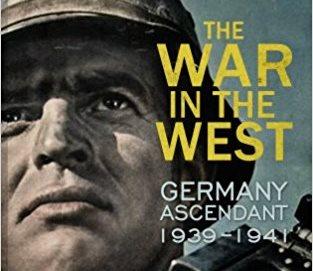Nazis lost the war through "spectacular inefficiency"
He said the Wehrmacht’s iconic was a marvel of complex engineering, but too liable to failure, with 50 per cent of all Panzer fatalities in the war due to mechanical faults. “A very different picture emerges and one that makes the Germans look frankly pretty inefficient and the British and Americans pretty good,” he said. “We were much more efficient at making tanks and planes than the Germans - they were spectacularly inefficient.”
The War in the West explains how British planners favoured tanks that were easy to maintain on the battlefield, even if they could be outgunned by the enemy. He said historical accounts of the war had focused too heavily on the experience of individual frontline allied soldiers, and their impression of the Germans’ fighting ability, without taking into account Wehrmacht’s logistical ability. “The Tiger had a six-speed, semi-automatic, hydraulically controlled pre-selector gearbox,” Mr Holland told the Today Programme. “If you put an 18-year-old in that it’s going to break.” “The Tiger was...incredibly complicated, mechanically unreliable, very difficult to sustain in combat, unusable for anything other than short distances.
The book claims that, because of Germany’s faltering access to the raw materials of war it would have needed to wipe out all its enemies in the first phase of the conflict in order to ensure victory in the war. “They didn’t manage that, and then invading the Soviet Union was an act of desperation to secure the oil and food and steel they needed.”
The book also seeks to quash the narrative that Britain was overly reliant on American equipment, pointing out that 31 per cent of all armaments used by the US in Europe were supplied by the British.
Henry Bodkin

